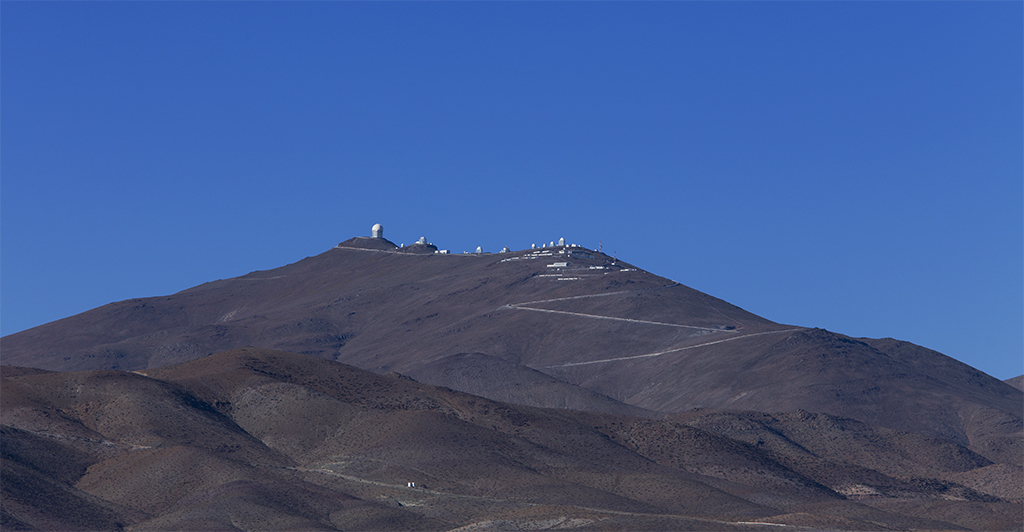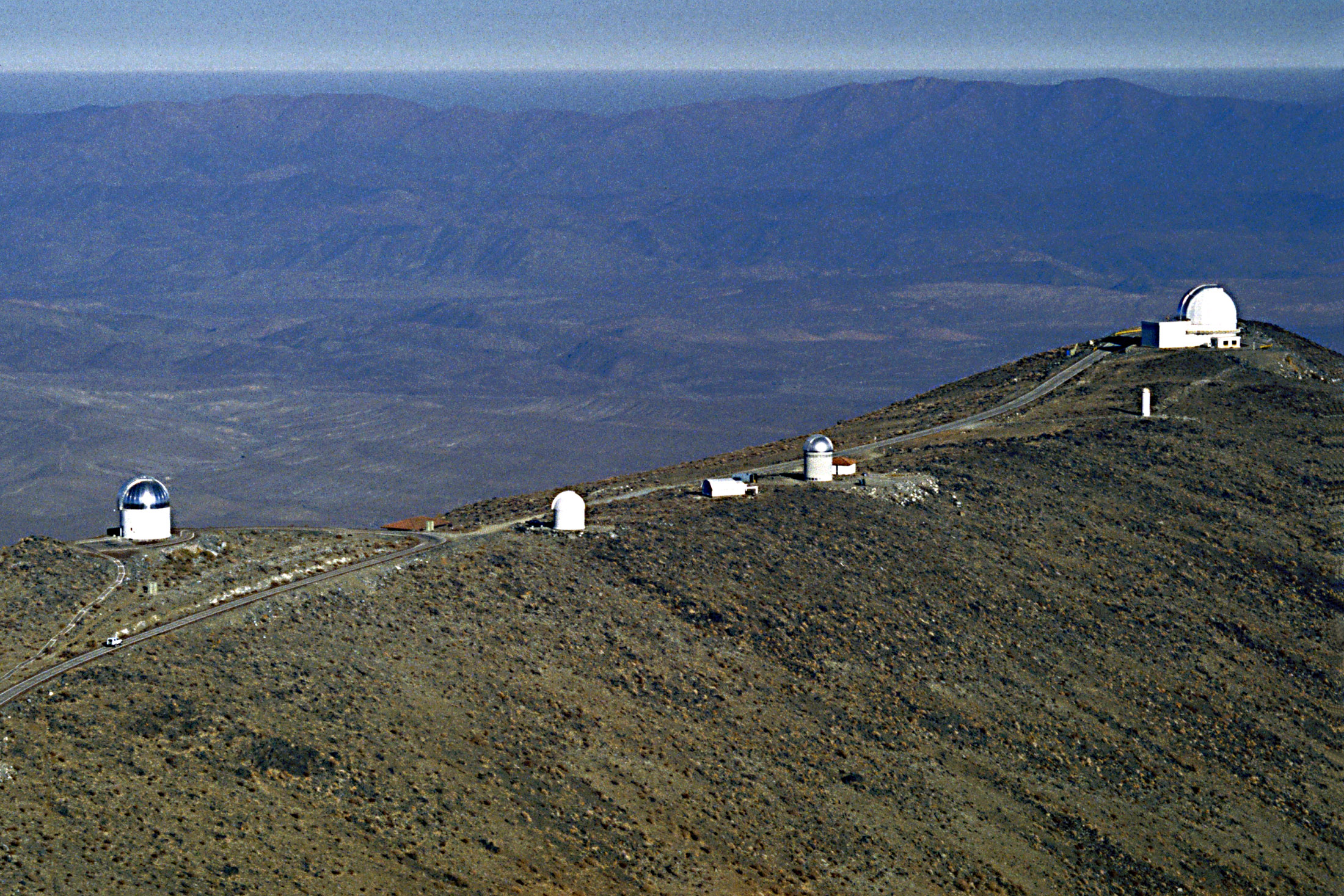Welcome to DU!
The truly grassroots left-of-center political community where regular people, not algorithms, drive the discussions and set the standards.
Join the community:
Create a free account
Support DU (and get rid of ads!):
Become a Star Member
Latest Breaking News
General Discussion
The DU Lounge
All Forums
Issue Forums
Culture Forums
Alliance Forums
Region Forums
Support Forums
Help & Search
Science
Related: About this forumExtremely massive exoplanet discovered in the Milky Way's bulge
November 6, 2017 by Tomasz Nowakowski
(Phys.org)—As a result of NASA's Spitzer Space Telescope observations of a microlensing event, astronomers have found an extremely massive alien world circling a star located in the Milky Way's bulge. The newly discovered planet, designated OGLE-2016-BLG-1190Lb, is the first Spitzer microlensing exoworld residing in the galactic bulge. The finding was presented October 27 in a paper published on arXiv.org.
Microlensing is very useful technique for detecting alien worlds in the inner galactic disk and bulge, where it is difficult to search for planets with other methods. It facilitates the discovery of distant objects by using background stars as flashlights. If a star moves in front of an another star, the light from the distant star is bent by the gravitational pull of the nearer star and the more distant star is magnified. Microlensing does not rely on the light from the host stars; thus, it can detect planets, even when the host stars cannot be detected.
OGLE-2016-BLG-1190 was discovered in June 2016 as a microlensing event by the Optical Gravitational Lensing Experiment (OGLE) collaboration. OGLE is a Polish astronomical project based at the University of Warsaw, searching for dark matter and extrasolar planets. It utilizes the 1.3 meter Warsaw telescope mounted at the Las Campanas observatory in Chile.
Spitzer observed this microlensing event a few days after its discovery. An international team of researchers led by Yoon-Hyun Ryu of the Korea Astronomy and Space Science Institute in Daejon, South Korea, reports that these Spitzer observations detected a new, massive planet orbiting a dwarf star.
Read more at: https://phys.org/news/2017-11-extremely-massive-exoplanet-milky-bulge.html#jCp



Many images of Las Campanas observatory in Chile:
https://images.search.yahoo.com/search/images;_ylt=AwrB8pMENwZaEygAuE.LuLkF;_ylc=X1MDOTYwNTc0ODMEX3IDMgRiY2sDZWFlcjdmOWNnbDI5ZyUyNmIlM0Q0JTI2ZCUzRGZFVE9PSzFyWUgzS3VfNWJGaWk4THF3a19jX3JYc19ya1E2azM1dGQ0N2NwM1EtLSUyNnMlM0RkayUyNmklM0RWTThOS1NVNUsxM2NNMnBVVDVBbwRmcgMEZ3ByaWQDQnFRcDBleVRTc2lHMDIzOUdNTllkQQRtdGVzdGlkA251bGwEbl9zdWdnAzEEb3JpZ2luA2ltYWdlcy5zZWFyY2gueWFob28uY29tBHBvcwMwBHBxc3RyAwRwcXN0cmwDBHFzdHJsAzMzBHF1ZXJ5A0xhcyBDYW1wYW5hcyBvYnNlcnZhdG9yeSBpbiBDaGlsZQR0X3N0bXADMTUxMDM1Njc0NgR2dGVzdGlkA0I0MjYx?gprid=BqQp0eyTSsiG0239GMNYdA&pvid=oLzo.TEwLjHlO2d6WQqJMAI7MjYwMgAAAABVA.3P&fr2=sb-top-images.search.yahoo.com&p=Las+Campanas+observatory+in+Chile&ei=UTF-8&iscqry=&fr=sfp
InfoView thread info, including edit history
TrashPut this thread in your Trash Can (My DU » Trash Can)
BookmarkAdd this thread to your Bookmarks (My DU » Bookmarks)
2 replies, 1636 views
ShareGet links to this post and/or share on social media
AlertAlert this post for a rule violation
PowersThere are no powers you can use on this post
EditCannot edit other people's posts
ReplyReply to this post
EditCannot edit other people's posts
Rec (4)
ReplyReply to this post
2 replies
 = new reply since forum marked as read
Highlight:
NoneDon't highlight anything
5 newestHighlight 5 most recent replies
= new reply since forum marked as read
Highlight:
NoneDon't highlight anything
5 newestHighlight 5 most recent replies
Extremely massive exoplanet discovered in the Milky Way's bulge (Original Post)
Judi Lynn
Nov 2017
OP
Roland99
(53,342 posts)1. Is that a planet in your pocket?
Judi Lynn
(160,508 posts)2. Astronomers discover a giant world but is it a planet?
A recently-discovered giant world lies right on the boundary between being a star and a planet – and that could answer some big questions
Stuart Clark
Dr Stuart Clark writes Across the Universe for the Guardian, and is the author of The Unknown Universe (Head of Zeus).
@DrStuClark
Friday 10 November 2017 09.15 EST
- click for image -
https://www.theguardian.com/science/across-the-universe/2017/nov/10/astronomers-discover-a-giant-world-but-is-it-a-planet#img-1
A newly discovered world dwarfs our own largest planet, Jupiter pictured above, and could be a kind of ‘failed’ star known as a brown dwarf. Adding to the mystery, it has been found in a forbidden region around its star called the brown dwarf desert. Photograph: NASA/JPL-Caltech/SwRI/MSSS/Betsy Asher Hall/Gervasio Robles
‘When is a planet not a planet?’ is a lot more than the beginning of a poor joke at a drunken astronomers’ Christmas party (but we laughed nonetheless). It is actually a serious question that cuts to the heart of our ignorance about how celestial objects form.
The discovery of a giant planet 22,000 light years away may now help shine some light on this particularly knotty problem. The planet is called OGLE-2016-BLG-1190. It was found on June 2016 by the Optical Gravitational Lensing Experiment (Ogle), a Polish astronomical project run by the University of Warsaw.
The planet was not seen directly but was inferred by the way its gravity focused light from its parent star, causing the star to temporarily brighten. Such a phenomenon is known as a gravitational microlensing event. It was observed by a number of different observations besides Ogle, one of which was the orbiting Nasa space telescope Spitzer.
In a study just published by Y-H Ryu of the Korea Astronomy and Space Science Institute, and colleagues, the astronomers calculate that the planet must be somewhere around 13 times the mass of Jupiter, the largest planet in our solar system.
More:
https://www.theguardian.com/science/across-the-universe/2017/nov/10/astronomers-discover-a-giant-world-but-is-it-a-planet